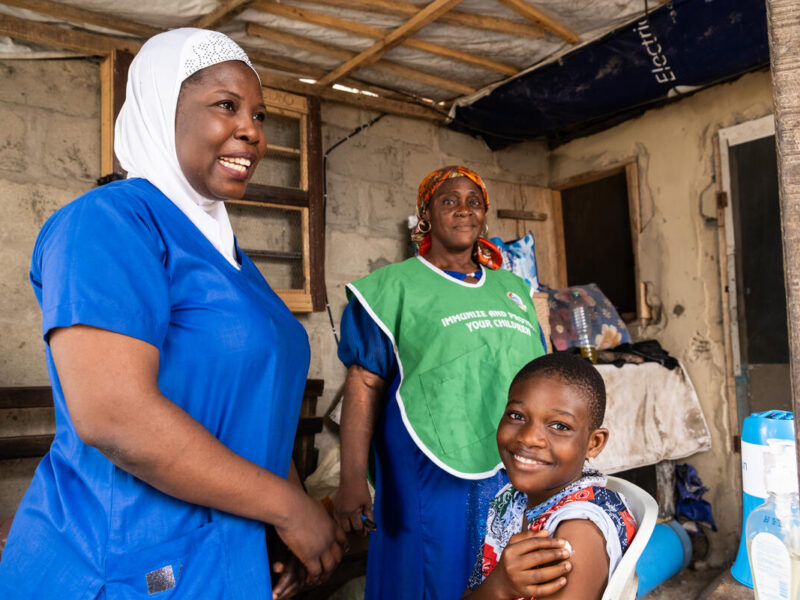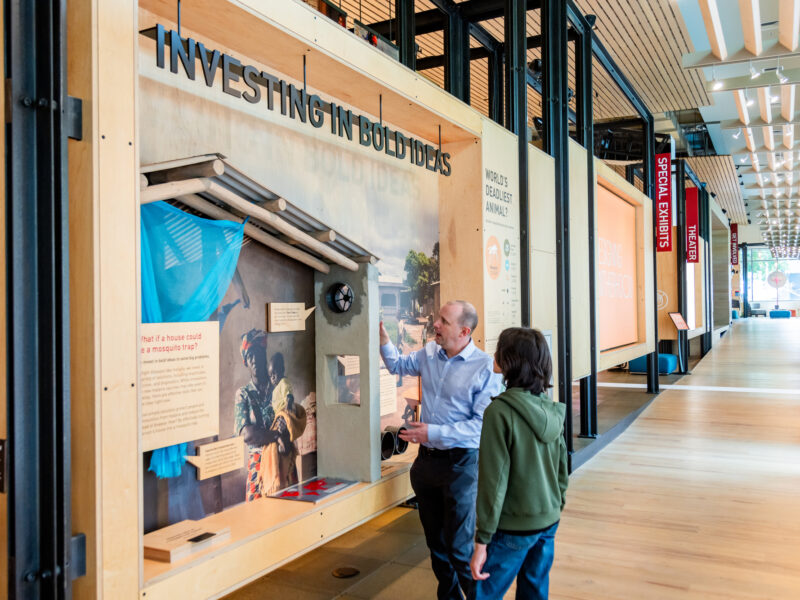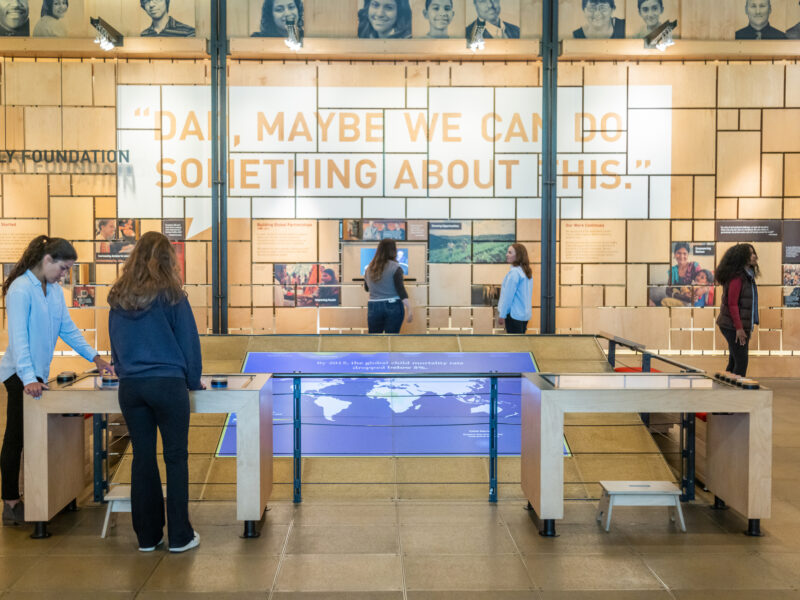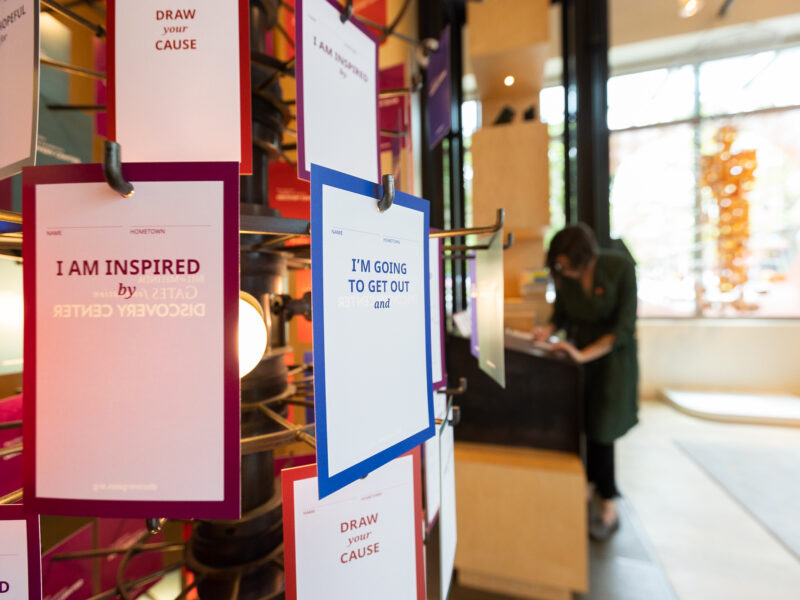Arrive curious.
Leave inspired.
Imagine a world where all of us can live healthy and productive lives. Explore our exhibitions, learn about the work of the Bill & Melinda Gates Foundation and its partners, and be inspired to take action on causes you care about.
Hours and location
Open Wednesday – Saturday | 10 a.m. – 5 p.m.
Public tour @ 2 p.m. | Toilet tour @ 3:30 p.m., Wednesday – Saturday
440 Fifth Ave. N.
Seattle, WA 98109
Always free
Introducing: Partners of Human Potential
Discover the power of partnership. Experience the stories of the Bill & Melinda Gates Foundation’s amazing partners and their game-changing work.
Upcoming events
Together We Can Stop Cervical Cancer
Thursday, April 25, 2024 | 5 – 7 pm PDT
Discovery Center, In-person & online
Delve into the urgent and critical issue of cervical cancer prevention with Dr. Linda Eckert and Tanjila Taskin, Program Officer, Immunization at the Bill & Melinda Gates Foundation.
Tour & Staff Chat
Thursday, April 25, 2024 | 2 – 3 pm PST
Discovery Center
Tour the galleries for 30 minutes with a Discovery Center guide and then chat with a featured staff member at the Bill & Melinda Gates Foundation about their area of focus.
Featured Exhibition
A Better Way to Go
Toilets and the Future of Sanitation
Explore innovations, powerful stories, toilets of the future, art installations, and visions of resilient and sustainable sanitation systems.
Exhibition highlights
Our work gallery
At the Discovery Center, you’ll see examples of how we work with partners around the world to fight disease, gender inequality, make agricultural innovations, and more.
Get involved gallery
How would you change your community for the better? We share all sorts of ways you can make a difference.
Sign up for our bimonthly newsletter
By clicking Sign Up, you agree to the Bill & Melinda Gates Foundation’s Privacy & Cookie Notice.



